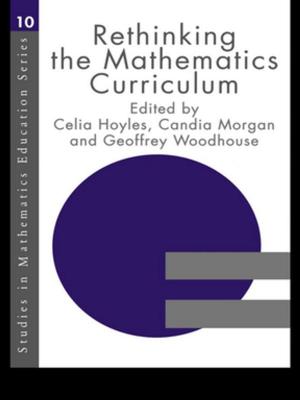| Author: | Jessica Milner Davis | ISBN: | 9781351520232 |
| Publisher: | Taylor and Francis | Publication: | July 5, 2017 |
| Imprint: | Routledge | Language: | English |
| Author: | Jessica Milner Davis |
| ISBN: | 9781351520232 |
| Publisher: | Taylor and Francis |
| Publication: | July 5, 2017 |
| Imprint: | Routledge |
| Language: | English |
Farce has always been relegated to the lowest rung of the ladder of dramatic genres. Distinctions between farce and more literary comic forms remain clouded, even in the light of contemporary efforts to rehabilitate this type of comedy. Is farce really nothing more than slapstick-the "putting out of candles, kicking down of tables, falling over joynt-stools," as Thomas Shadwell characterized it in the seventeenth century? Or was his contemporary, Nahum Tate correct when he declared triumphantly that "there are no rules to be prescribed for that sort of wit, no patterns to copy; and 'tis altogether the creature of imagination"? Davis shows farce to be an essential component in both the comedic and tragic traditions. Farce sets out to explore the territory of what makes farce distinct as a comic genre. Its lowly origins date back to the classic Graeco-Roman theatre; but when formal drama was reborn by the process of elaboration of ritual within the mediaeval Church, the French term "farce" became synonymous with a recognizable style of comic performance. Taking a wide range of farces from the briefest and most basic of fair-ground mountebank performances to fully-fledged five-act structures from the late nineteenth century, the book reveals the patterns of comic plot and counter-plot that are common to all. The result is a novel classification of farce-plots, which serves to clarify the differences between farce and more literary comic forms and to show how quickly farce can shade into other styles of humor. The key is a careful balance between a revolt against order and propriety, and a kind of Realpolitik which ultimately restores the social conventions under attack. A complex array of devices in such things as framing, plot, characterization, timing and acting style maintain the delicate balance. Contemporary examples from the London stage bring the discussion u
Farce has always been relegated to the lowest rung of the ladder of dramatic genres. Distinctions between farce and more literary comic forms remain clouded, even in the light of contemporary efforts to rehabilitate this type of comedy. Is farce really nothing more than slapstick-the "putting out of candles, kicking down of tables, falling over joynt-stools," as Thomas Shadwell characterized it in the seventeenth century? Or was his contemporary, Nahum Tate correct when he declared triumphantly that "there are no rules to be prescribed for that sort of wit, no patterns to copy; and 'tis altogether the creature of imagination"? Davis shows farce to be an essential component in both the comedic and tragic traditions. Farce sets out to explore the territory of what makes farce distinct as a comic genre. Its lowly origins date back to the classic Graeco-Roman theatre; but when formal drama was reborn by the process of elaboration of ritual within the mediaeval Church, the French term "farce" became synonymous with a recognizable style of comic performance. Taking a wide range of farces from the briefest and most basic of fair-ground mountebank performances to fully-fledged five-act structures from the late nineteenth century, the book reveals the patterns of comic plot and counter-plot that are common to all. The result is a novel classification of farce-plots, which serves to clarify the differences between farce and more literary comic forms and to show how quickly farce can shade into other styles of humor. The key is a careful balance between a revolt against order and propriety, and a kind of Realpolitik which ultimately restores the social conventions under attack. A complex array of devices in such things as framing, plot, characterization, timing and acting style maintain the delicate balance. Contemporary examples from the London stage bring the discussion u















